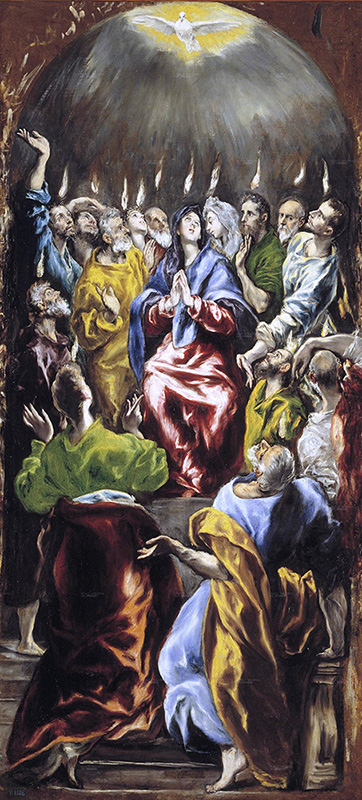By Revd Canon Ian Morter
This Sunday the Church celebrates the feast of Pentecost – the outpouring of the Holy Spirit upon the Apostles a few days after Jesus’ Ascension, and his return to the Father. In The Acts of the Apostles (chapter 2) we have an account of the day of Pentecost when the twelve Apostles who were gathered together in a house, heard the sound of a mighty rushing wind came from heaven that filled the room, and there appeared tongues as of fire, that rested on each one of them. And we are told ‘they were all filled with the Holy Spirit and began to speak in tongues, as the Spirit gave them utterance’. This experience emboldened the twelve and they went out into the City of Jerusalem where people of many nationalities were gathered in one place, who heard them speaking in their own languages of the mighty work that God had brought about through the ministry, passion, death and resurrection of his son Jesus.

Three times, I have had the wonderful privilege and opportunity to visit Madrid. My time in the city has meant that I have spent hours in the Prado Museum, where many wonderful works of art are housed. Amongst the vast collection of paintings there is an amazing number of painting by the artist El Greco (The Greek) whose name was Domenikos Theotokopoulos, who was a native of Crete. The one I have chosen to share with you this week is ‘The Pentecost’. Thought to be completed in 1600 and was part of an altar piece for church of the Augustine College of Maria de Aragon in Madrid. The two lower paintings that were once part of the altar piece are now separated. The Annunciation in housed in Bucharest, as is the Baptism of Christ. These two works were previously subjects of paintings during El Greco’s time in Italy, whereas Pentecost was original to this commission in Madrid.
In his usual distinctive style, El Greco has painted with a reference to the ‘Mannerist’ technique of elongated figures and bright acid colours. However here he uses a perspective that is particularly original, that is steeped in a more ‘expressionist’ spiritually which from 1600 became even more personal to El Greco and some would contend more disconcerting. Perhaps intentionally distancing himself from contemporary painting.
This painting depicts the moment when the Holy Spirit, in the form of flames, rests on the Virgin and the Apostles on Pentecost day in Jerusalem, The bald, bearded Apostle who looks out at the viewer from the right of the canvas has been identified as a self-portrait of El Greco. When we read the account of Pentecost in The Act of the Apostles we hear nothing of the Virgin Mary being present but a surprising number of artists do include her at the Pentecost Event.
El Greco sometimes painted scenes in small spaces, and thus emphasizing the vertical format, and bathing the figures in a ghostly light that enhances them in an unreality, with elongated limbs and expressive features. The height of the altarpiece above floor level would place the seminarians of the College in the lower part of the painting, and they would see themselves perhaps as members of the crowd gathered in Jerusalem, perplexed and amazed at the gift of the Holy Spirit being given to the infant Church. Their gaze would be drawn upward toward Mary, the Apostles, and the plumes of fire. The dove at the top of the painting representing the Holy Spirit; its wings are spread and the light that surrounds it is radiating downward over the gathering. The two men in the foreground at the bottom of a short flight of stairs have lifted their arms exaltation, are leaning back slightly in order to look at the dove. Mary (dressed in red and blue) is seated at the centre of the painting with Apostles gathered around her; the other woman included in the paint at Mary’s left shoulder is thought to be Mary Magdalene. El Greco was perhaps conscious that in The Acts of the Apostles it says that when the apostles prayed, they did so with Mary and the women.
The figures in ‘The Pentecost’ are not posing as for a formal group portrait. They are an animated informal mix of people who in body language and facial expression are reacting individually, and yet they are part of the collective experience. They are responding with awe and excited emotional involvement as they take part in this miraculous event.